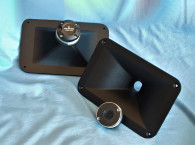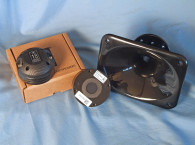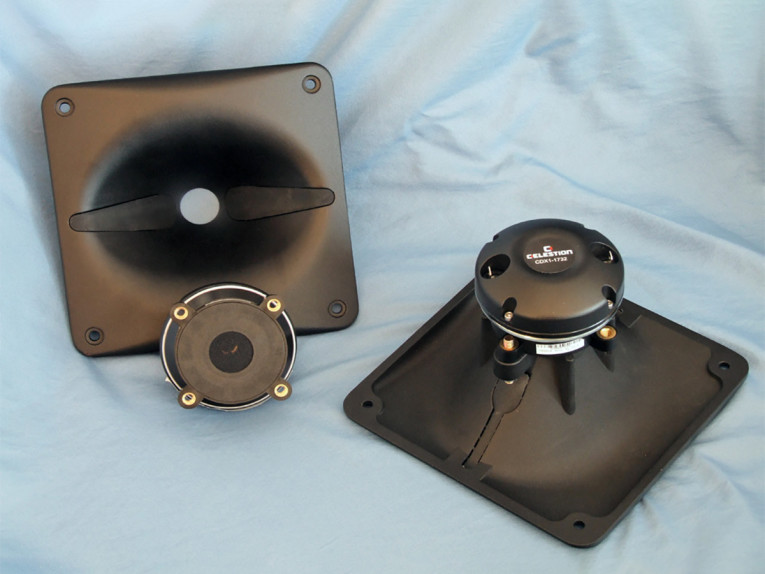


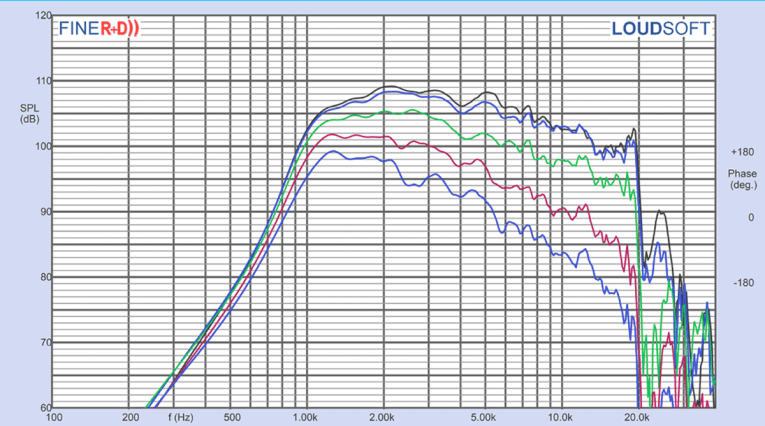

The diaphragm is fixed using Celestion’s Sound Castle soft clamping assembly methodology, which purports to reduce the stress associated with holding the diaphragm in place, decreasing distortion and increasing reliability.
Other features include a finite element analysis (FEA)-optimized neodymium magnet motor structure, a continuous power handling of 100 W with a 60 WRMS power handling rating, a 2 kHz recommended crossover frequency (with a minimum 12 dB/octave high-pass network), and 1 W/1 m 110 dB sensitivity (measured 2 π on a typical horn). Celestion supplied its 1” H1-7050 “No Bell” elastomer (plastic rubber) damped cast aluminum 70° × 50° exponential flare horn, which was previously featured along with the Celestion CDX1-1447 compression driver in a review featured in the March 2017 issue of Voice Coil.
Damping cast metal horns is a great concept, as they truly do ring like a “bell.” Back in the mid to late 1970s, when I was designing home hi-fi products using metal horns, I sprayed the back side of the metal horns with thick coating of foam, which proved to be very effective at damping the “ringing.” Cast metal horn ringing is probably a greater issue when the horns are used in a nearfield environment as in home audio and studio monitors. The Celestion 70° × 50° “No Bell” horn solves this same problem by inserting an elastomer strip across the horizontal center of the horn and works extremely well, as advertised.
To begin, I used the LinearX LMS analyzer to produce the 300-point stepped sine wave impedance plot shown in Figure 1. The solid black curve represents the CDX1-1732 mounted on the H1-7050 horn and the dashed blue curve represents the compression driver without the horn. With a nominal 8 Ω impedance, the CDX1-1732 had 5.85 Ω DCR, with minimum impedance mounted on the H1-7050 horn of 7.36 Ω and at 4.6 kHz.
For the next set of sound pressure level (SPL) measurements, I free-air mounted the Celestion CDX1-1721/H1-7050 combination without an enclosure and measured both the horizontal and vertical on and off-axis at 2 V/0.5 m (normalized to 2.83 V/1 m) from 0° on-axis to 60° off-axis using the Loudsoft FINE R+D analyzer and GRAS 46BE microphone (supplied courtesy of Loudsoft and GRAS Sound & Vibration).
Figure 2 displays the on-axis frequency response of the compression driver/horn, which is relatively smooth with no major anomalies from the 2 kHz recommended crossover frequency to about 20 kHz, with the typical downward sloping response of an exponential horn. Figure 3 shows the 0° to 60° on- and off-axis response in the horizontal plane. Figure 4 displays the normalized horizontal plane response.


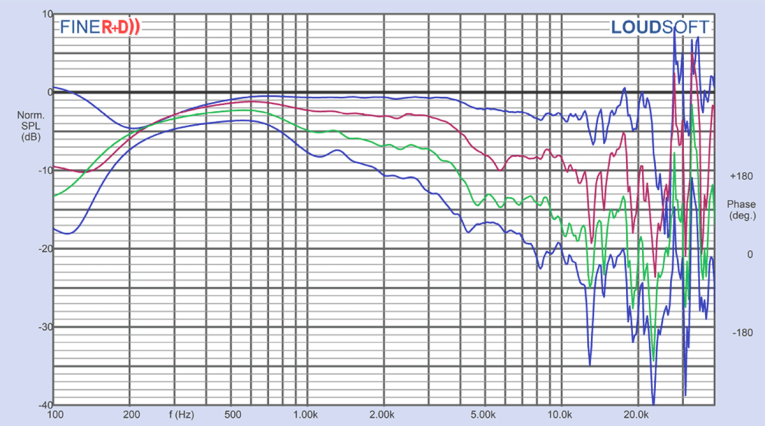
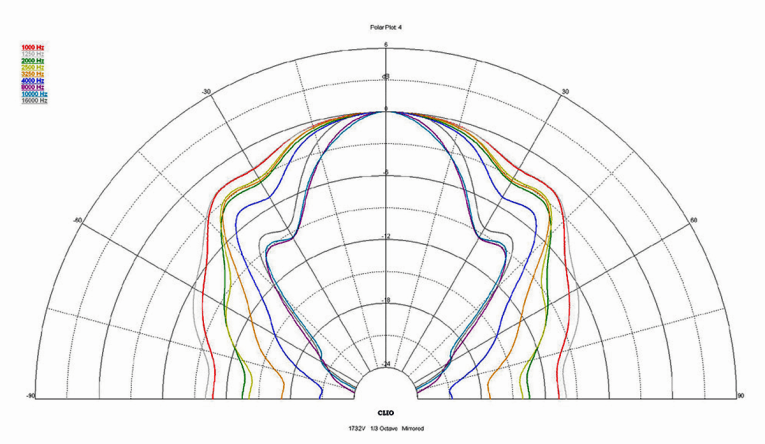
Figure 5 shows the 180° horizontal polar plot (in 10° increments with 1/3 octave smoothing applied), which was generated with the CLIO Pocket analyzer and accompanying microphone (courtesy of Audiomatica SRL). Figure 6 gives the on- and off-axis 0° to 60° response in the vertical plane. Figure 7 depicts the normalized vertical plane response. Figure 8 shows the CLIO Pocket-generated 180° vertical plane polar plot (also in 10° increments with 1/3 octave smoothing applied).
Last, Figure 9 illustrates the two-sample SPL comparison showing the two Celestion CDX1-1732 compression driver samples to be closely matched within 1 dB or less above the recommended crossover frequency of 2 kHz to above 20 kHz. Next, I set up the Listen, Inc. AudioConnect analyzer and 1/4” SCM microphone (provided by Listen, Inc.) to measure distortion and generate time-frequency plots.
For the distortion measurement, I again mounted the Celestion CDX1-1732/H1-7050 combination in free-air and set the SPL to 104 dB at 1 m (2.9 V determined by using a pink noise stimulus generator and internal SLM in the SoundCheck 16 software). Then, I measured the distortion with the Listen microphone placed 10 cm from the mouth of the horn. This produced the distortion curves shown in Figure 10.
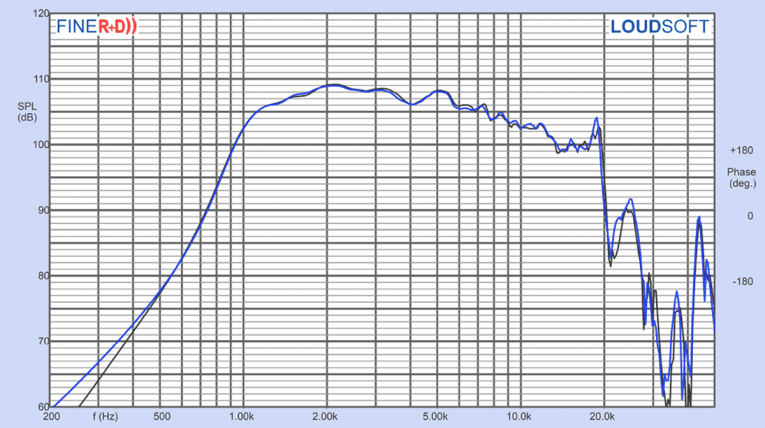
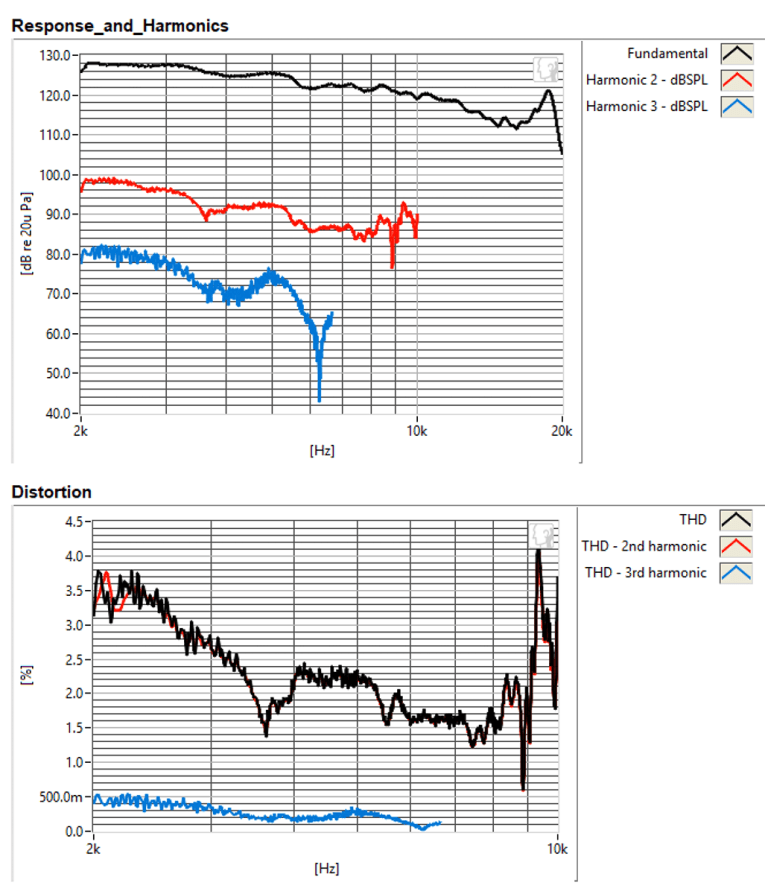
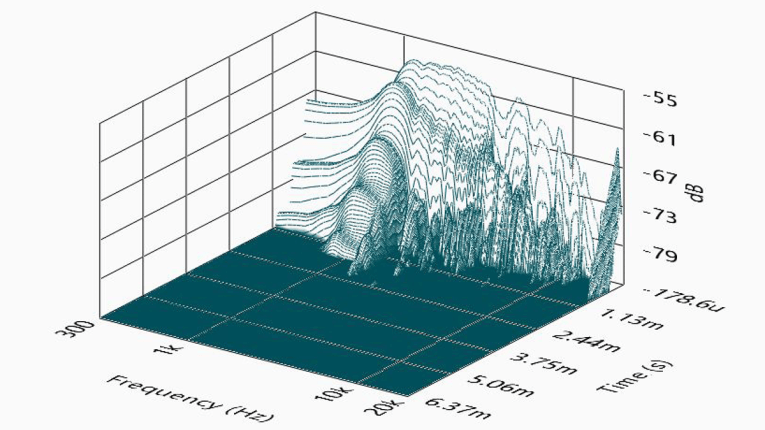

Following this test sequence, I then set up SoundCheck 16 to generate a 2.83 V/1 m impulse response curve for this driver/horn combination and imported the data into Listen’s SoundMap Time/Frequency software. Figure 11 shows the resulting cumulative spectral decay (CSD) waterfall plot. Figure 12 shows the Short Time Fourier Transform (STFT) plot.
With the data taken as a whole, the UK-manufactured Celestion neodymium CDX1-1732 is obviously a well-engineered 1” compression driver, exhibiting good performance, combined with Celestion’s usual excellent build quality. For more information, visit www.celestion.com, or email inquiries to info@celestion.com. VC
This article was originally published in Voice Coil, May 2019.




